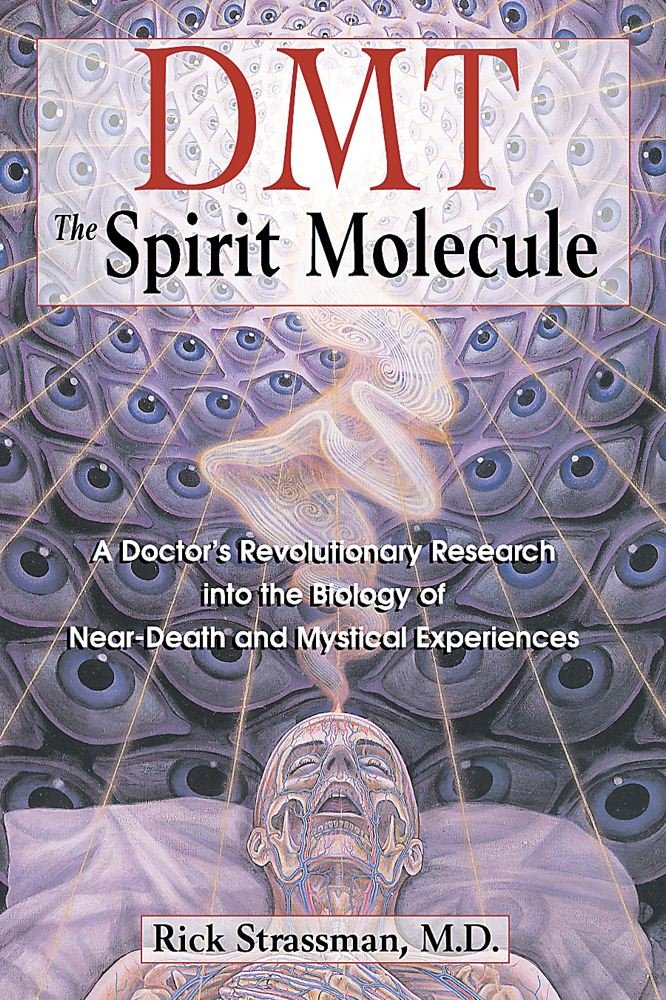
“DMT: The Spirit Molecule: A Doctor’s Revolutionary Research into the Biology of Near-Death and Mystical Experiences”
The book reveals and analyses Strassman’s clinical research into DMT, a plant-derived substance which is also produced by the brain. As such this is one of the most thought-provoking studies on altered states and the nature of consciousness. The volunteers reported an amazing array of positive mystical or frightening hallucinatory experiences including encounters with intelligent entities.
Strassman’s research connects DMT with the pineal gland; this corresponds to the esoteric belief that the pineal, connected with the Crown, Keter or Sahasrara chakra, eases the spirit’s movement into different levels of consciousness or various dimensions of existence. Graham Hancock’s Supernatural similarly explores the use of psychedelics to induce altered states or allow the soul to explore other dimensions.
Psychedelic substances in science and society, the chemical qualities and molecular structure of DMT, the pineal gland and its role in the psychedelic experience are all discussed in the first part. Part Two relates the history of the author’s research, from the actual research proposal through the process of obtaining permission; this section may be skipped by the average reader.
Next Strassman describes the process of selecting volunteers, obtaining DMT and the first experiments, whilst in Part Four he examines the case reports: what the volunteers said and did, their behavior, etc. This makes for strange and fascinating reading. Some experiences were positive and illuminating, resembling uplifting meditative states, whilst others were eerie or deeply unpleasant.
Part Five takes stock of these reports and considers the question of whether the experience was worth the effort for each individual that took part. Strassman attempts to assess the ultimate benefit that each person derived. Definitions come into play and determining something so subjective is difficult but it would appear that the experiments did reward each individual in some way or other.
Then follows a discussion of the soul/psyche and states of consciousness. It seems that spontaneously occurring psychedelic experiences are mediated by elevated levels of endogenous DMT. This `spiritual’ molecule thus unlocks unknown territory. If the brain is a receiver, DMT fine-tunes this organ so that the individual consciousness moves beyond familiar awareness into other realms, most of which are inhabited. Many volunteers mentioned a `ripping’ sound as they made the transition.
There’s a difference between this awareness and normal dreaming. Current psychological theory does not satisfactorily explain the phenomenon or the peculiar experiences, especially as regards the entities encountered. This leads to a speculative discussion on cosmology, the possibility of parallel universes, a multiverse and dark matter with reference to David Deutsch’s book The Fabric of Reality.
The author concludes his extraordinary work by looking at the practical use of psychedelics in therapy, as promoters of creativity or as entheogens (substances that trigger spiritual/religious experiences).